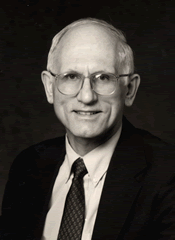Frontiers in Soft Condensed Matter Workshop
 After growing up all over the world as a son of a diplomat, Tom Lubensky studied at Caltech and Harvard where he took his Ph.D. with Paul Martin. He received an NSF postdoctoral fellowship and traveled to Orsay – a position that turned out to be fateful. In that fertile crescent of liquid crystal physics, Tom’s thesis work on response functions in magnetic systems was his springboard into the physics of liquid crystals. As a post-doc at Brown and as a young faculty member at Penn, Tom was instrumental in providing the first broken-symmetry-based derivation of the hydrodynamics of nematic and cholesteric liquid crystals. During a visit to Aspen, working with Bert Halperin and Sheng Ma, he analyzed the normal-to-superconducting transition and showed that gauge field fluctuations changed the second order transition of the conducting superfluid into a first order transition. This result, recapitulated by Sidney Coleman and Eric Weinberg is one of the building blocks of the theory of critical phenomena and phase transitions. Following this work, Tom developed the definitive theoretical analysis of the nematic-to-smectic-A transition, a problem rife with subtleties and complexities still be teased out of experiment.
After growing up all over the world as a son of a diplomat, Tom Lubensky studied at Caltech and Harvard where he took his Ph.D. with Paul Martin. He received an NSF postdoctoral fellowship and traveled to Orsay – a position that turned out to be fateful. In that fertile crescent of liquid crystal physics, Tom’s thesis work on response functions in magnetic systems was his springboard into the physics of liquid crystals. As a post-doc at Brown and as a young faculty member at Penn, Tom was instrumental in providing the first broken-symmetry-based derivation of the hydrodynamics of nematic and cholesteric liquid crystals. During a visit to Aspen, working with Bert Halperin and Sheng Ma, he analyzed the normal-to-superconducting transition and showed that gauge field fluctuations changed the second order transition of the conducting superfluid into a first order transition. This result, recapitulated by Sidney Coleman and Eric Weinberg is one of the building blocks of the theory of critical phenomena and phase transitions. Following this work, Tom developed the definitive theoretical analysis of the nematic-to-smectic-A transition, a problem rife with subtleties and complexities still be teased out of experiment.
Parallel to this work, Tom and Brooks Harris, explored the effect of quenched disorder on phase transitions. He was the first to use the epsilon expansion to study the critical behavior of spin models with disorder, an analysis which led to the study of percolation, spin glasses, and random resistor networks. Tom branched out into the study of random walks and in particular, into branched polymers. With collaborators, he developed a deep connection between Anderson localization, the Yang-Lee edge singularity and branched polymers, and predicted exponents which are now known to be exact.
When quasicrystals hit the scene, Tom was there, developing the descriptions of their elasticity, topological defects, and hydrodynamics. He and collaborators also elucidated the difference between pinned and unpinned phasons and the role of quenched phason strain in determining structure. The connection between symmetries, order parameters, dynamics and structure is an essential ingredient in Tom’s style. Working with Scot Renn, Tom predicted that chiral smectic liquid crystals could exhibit a phase, analogous to an Abrikosov vortex lattice in superconductors. In this so-called twist-grain-boundary (TGB) phase, there is a periodic array of grain boundaries - each consisting of a parallel array of screw dislocations - separating layered smectic slabs whose layer normals rotate in jumps across the grain boundaries. Goodby and collaborators subsequently discovered the TGB phase. Literally hundreds of compounds exhibit TGB phases and TGB has become a standard part of the liquid crystal nomenclature. His interest in chirality at the macroscopic level grew into work with collaborators on the microscopic of origin of chirality. Going beyond simple symmetry arguments, they related macroscopic chiral properties to microscopic structure.
Tom is not one to rest on his laurels. He has proposed a new state of matter, the “sliding phase” to interpret experiments on DNA-lipid complexes, has studied the theory of liquid crystalline elastomers, and has begun work on granular gases composed of chiral constituents. Tom has always worked closely with experiment and experimentalists, often instigating new work and new fields. His masterful and comprehensive book with Chaikin has provided the field of soft matter with a definitive source of knowledge (and homework problems)!
Among Tom’s major awards are a Sloan Fellowship (1975) and a Guggenheim Fellowship (1981), election to both the American Association for the Advancement of Science (2000) and the National Academy of Sciences (2002), and the Buckley Prize of the American Physical Society (2004).